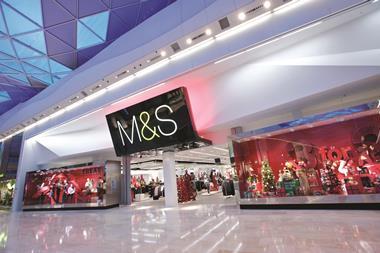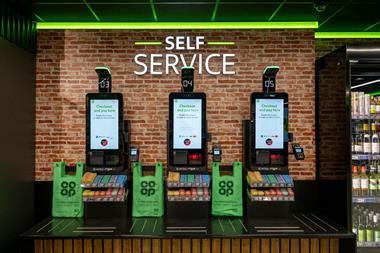Home delivery can make or break an online shopping experience, but for many retailers care stops at making a sale. Ben Cooper evaluates the technology at hand for efficient fulfilment
Speed and efficiency is the name of the game with home delivery. And with advances being made all the time to speed up the online fulfilment process, those retailers that don’t keep up the pace are in danger of quickly falling behind.
“The fulfilment operations for e-commerce are very different and you have to be flexible,” says Mothercare chief executive Ben Gordon. “Customers will keep expecting better service all the time and keeping up with that is very important.”
Even with the advantages of an efficient system being so patently clear, there are still some retailers that are dragging their feet and are reluctant to make the requisite investment. But with a wealth of technology now available to dramatically improve home delivery services, this reluctance will soon not be an option if retailers want to remain competitive. The increasingly savvy online customer is fickle about where they shop, especially in this tough climate, and will not forget a poor service when there are so many strong players about.
Home Delivery Network head of IT systems Chris Airey says there are now two very different attitudes among retailers towards home delivery. There are some, he says, that use the most up-to-date technology to make the whole process as fast as possible. But there are still those that stick to the cheaper, more traditional methods of delivery.
“We’re at the point in the internet journey where it’s grown to being extremely important but some retailers still don’t treat e-commerce as they should,” he explains. “I don’t think some supply chains have been designed from the customer’s point of view.”
So what makes a good service? Shoppers’ requirements can be boiled down to three things: speed, flexibility and communication. Retailers need to make sure the goods are delivered to their customers’ doors as quickly as possible, while providing as much choice as they can and keeping the lines of communication open from start to finish.
Customers expect better service all the time and keeping up with that is important
Ben Gordon, Mothercare
Airey says that of these, proper communication at every step of the way is the most vital, because for the consumer, no news is bad news. “The customer gets more concerned the less they hear,” he says. “Retailers are good at sending a confirmation of order email but a lot don’t do enough once they’ve handed over a parcel to the carrier.”
One increasingly popular form of communication available to retailers is SMS. Shoppers can now expect to receive a text message on or before the day of delivery telling them what time the driver is going to arrive. If the time they are given is not convenient, all the shopper needs to do is reply to the text or send an email to the carrier asking to rearrange the delivery and it will be changed almost immediately.
This service has been embraced by some and overlooked by others. Argos has been particularly proactive. As well as the SMS service to shoppers it has also taken on board dynamic route scheduling. If there are several drop-off points in the same area, this technology will plan the most efficient route for the delivery driver.
This helps speed up the delivery service, which helps reduce late or missed deliveries and helps the carrier stick to specified delivery time frames. In addition, any important information provided by the customer at the point of order, such as instructions to leave a parcel with a neighbour, is automatically flagged up on the driver’s hand-held terminal.
Service is king
Ocado is another retailer that recognises the importance of investing in the home delivery service. Ocado head of retail Jon Rudoe says: “Modern systems enable transparency of information. This is very good for the customer because it empowers them in the process.” For instance, Ocado now informs customers in advance via SMS if, as a result of supply problems, there are items missing from a delivery.
Modern systems enable transparency and this empowers customers
Jon Rudoe, Ocado
It is also important that retailers adopt a flexible approach when trying to meet their customers’ needs – taking into account their individual requirements. A rigid attitude towards home delivery will only alienate consumers.
Mothercare is one retailer that has noted the importance of flexibility. Its online shoppers are able to use a system called Baby Plan. Gordon explains that during a pregnancy shoppers can compile an online list of all the products needed for the baby. Items can be paid for at any point during the pregnancy and delivered all in one go on a date that is convenient – usually a couple of days after the baby is born.
But, of course, home delivery – or delivery to a work address – isn’t always convenient for online shoppers. Increasingly, retailers will need to look at alternative methods of online fulfilment.
A pioneering system could transform the way retailers deliver goods to their customers. Drop & Collect, which is in its early stages, allows customers to have goods delivered to any business signed up to the scheme. When ordering online goods a customer can chose their nearest Drop & Collect point and pick up their package when it’s convenient for them. The system has yet to go fully live but in the initial phase thousands of orders a month have already been delivered to Drop & Collect points.
Without innovation and proper systems in place, retailers will soon fall behind. Cutting costs in the process can prove a false economy in the long term and place the future of the business in real jeopardy.
Ray Fowler, director at business and technology consultancy CVL, says efficient home delivery also depends on close communication between retailers and carriers. “It’s about retailers and carriers sharing more information and developing better interfaces. The delivery driver needs to be seen as an extension of the retailer,” he says.
The strides that are being made by the carriers also need to be matched by retailers. Too many retailers try to wash their hands of an order once it has been dispatched to the carrier, but this doesn’t help a business in the long run.
As with much of running a business, there is a trade off to be made between cost saving and offering a reliable service to customers. “Retailers are in a difficult situation,” says Fowler. “They’re trying to reduce costs but maintain services. Online is the biggest growth area but it is also costly.”
In home delivery, cutting corners is a risky strategy. And it will become riskier as technology continues to improve and consumers become more demanding. But if you get orders to customers promptly and keep them informed every step of the way, you will be home and dry.
closer to the customer
Some of the ways in which retailers are improving their home delivery services…
- SMS many retailers have now set up a text-messaging service for customers that informs them of the date and time a parcel is going to be delivered and in some cases even the name of the driver
- IDIS Delivery Manager system developed by Metapak, this enables small- and medium-sized retailers to give their customers options that previously had only been possible for larger retailers with national coverage, such as which carrier the customer would rather receive the delivery from
- ByBox a system being developed by ByBox and BT in which public pay phones are being altered to become delivery points for online goods


























No comments yet